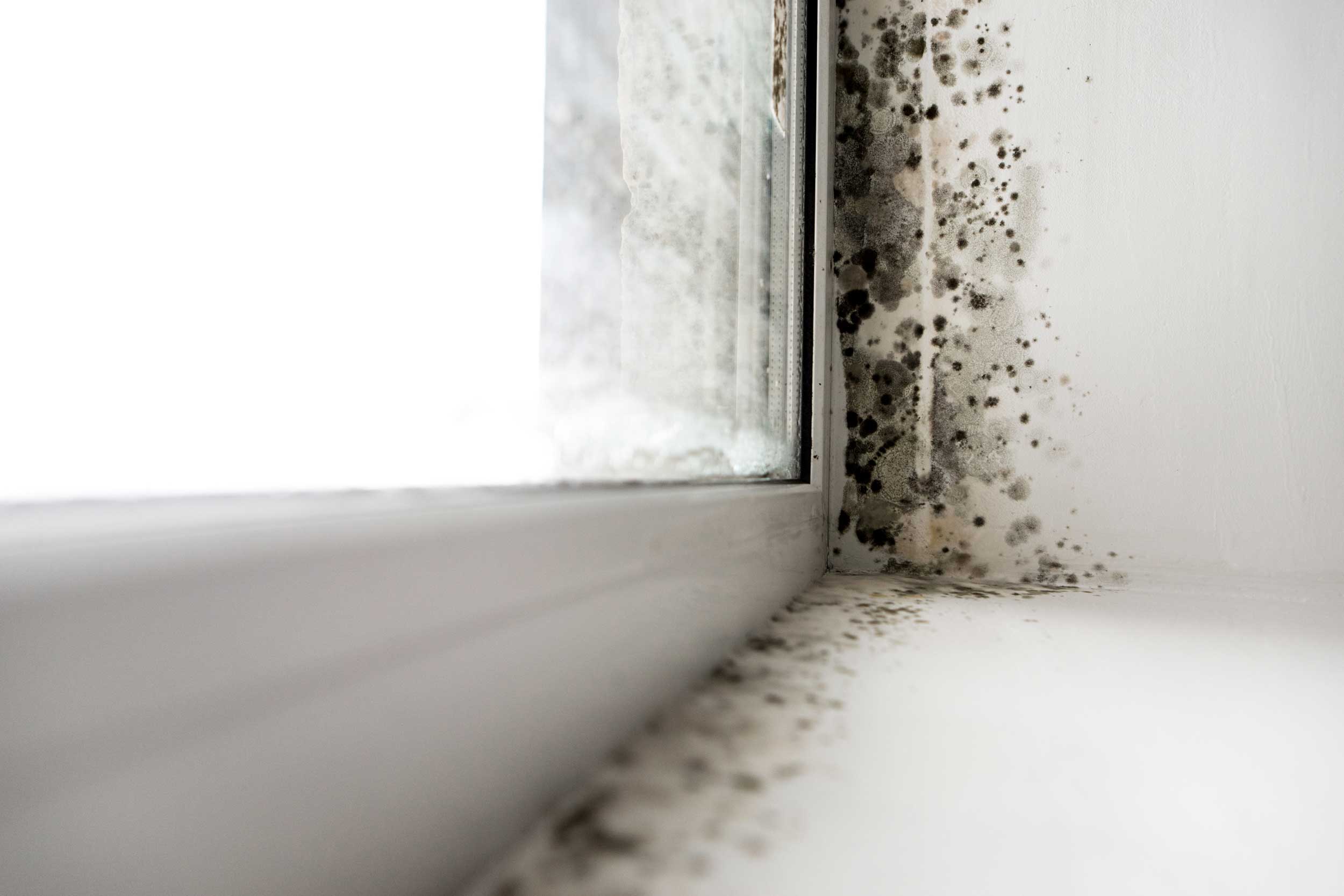
Stachybotrys (pronounced stacky-BOT-riss) is known colloquially as the “Black Mold”. This particular mold rose to fame, or infamy rather, following reports in the mid-1990s of acute pulmonary illness in children living in a home where this mold was found. Stachybotrys gained further notoriety in 2004 when a multimillion dollar lawsuit was awarded in favor of homeowners whose Stachybotrys remediation insurance claim was mishandled.
The presence of Stachybotrys inside of a structure is typically indicative of long-term water damage. Stachybotrys is known as a tertiary colonizer, which means it is a mold that is likely to colonize a surface after multiple organisms (primary and secondary colonizers) have already done so. These primary and secondary colonizers have lower moisture requirements than tertiary colonizers. This means that the longer something is water damaged and the more water intrusion that is allowed to occur, the more likely you will see Stachybotrys colonize the area.
Stachybotrys appears black both macroscopically (to the naked eye) and microscopically. Stachybotrys spores are pill-shaped, rough-textured, and black when they are fully mature. Oftentimes, Stachybotrys appears as a slick, black biofilm when growing on cellulose materials such as gypsum, wallpaper, books, or baseboards.
Interestingly, because Stachybotrys has such a high affinity for water, the spores tend to remain on the surface where the mold is growing. Most indoor mold types readily release spores into the air, making these molds easy to detect with air sampling. Stachybotrys, on the other hand, could be flourishing on indoor surfaces and remain undetectable in the air. This is why it is important to take surface samples in addition to air samples. Surface sampling, such as tape lifts, swab samples, and bulk samples can provide a definitive answer on what is growing where. Airborne spores can come from anywhere, and surface sampling data paints a more complete picture of the health of a building.
References
Beuchat, Larry R. “Influence of Water Activity on Growth, Metabolic Activities and Survival of Yeasts and Molds.” Journal of Food Protection, vol. 46, no. 2, 1983, pp. 135-141. Journal of Food Protection, https://watermark.silverchair.com/0362-028x-46_2_135.pdf?token=AQECAHi208BE49Ooan9kkhW_Ercy7Dm3ZL_9Cf3qfKAc485ysgAAArowggK2BgkqhkiG9w0BBwagggKnMIICowIBADCCApwGCSqGSIb3DQEHATAeBglghkgBZQMEAS4wEQQMYkPgnE01XRUeCV40AgEQgIICbVebHgWmwMI7RucENRhKPyfVOtPA6woqom9oY.
Dearborn, Dorr G., et al. “Overview of Investigations into Pulmonary Hemorrhage among Infants in Cleveland, Ohio.” Environmental Health Perspectives, vol. 107, no. 3, 1999, pp. 495-499. JAMA Network, file:///home/chronos/u-85e7788a4d2fdc0bd27de1dffa2e3ad456d95a1b/MyFiles/Downloads/poa8148.pdf.
Smith, Jordan. “The ‘Mold Queen’ Fights Back.” The Austin Chronicle, 21 March 2003, https://www.austinchronicle.com/news/2003-03-21/150675/.
